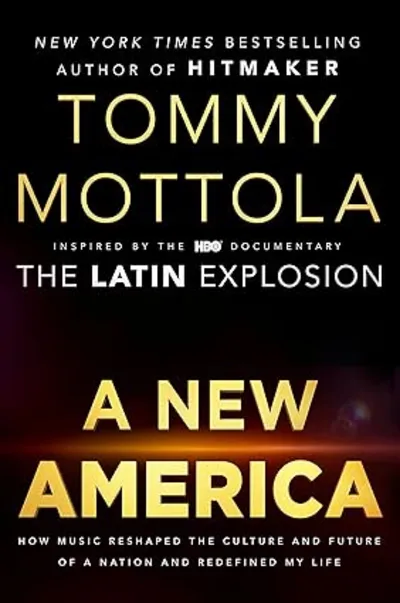published: 1 /
2 /
2025

Lisa Torem examines record label executive Tommy Mottola's new memoir 'A New America: How Music Reshaped The Culture and Future of a Nation and Redefined My Life ' about his role in the rise of Latin American music.
Article
During the course of Tommy Mottola's career, he helped develop the talents of super stars Mariah Carey, Ricky Martin, Michael Jackson, Shakira, Jennifer Lopez and Biance, among others.
With a roadmap dotted by hard work and an unwaning, cultural sensitivity, Mottola was destined to reach the top rung of his industry, but his memoir reveals what it took to remain there.
While living in the Bronx, New York, young Mottola developed an early love of Latino music. Initially he was inspired by bandmaster Tito Puente, the 1950s wunderkind, but then grew to appreciate Ritchie Valens' 'La Bamba' and further down the road, the contagious rhythms of Carlos Santana.
Regarding "Puente," Tommy recalls: "the Afro-Cuban rhythm driven by percussion and wailing horns,' which he heard on a speaker as he walked through a crowded concourse with his mother. Rather than pull her enchanted son along, she actually encouraged him to dance right then and there.
"At three years old, I was forever moved. Not only because of the music but also because of the joy that accompanied it," he wrote.
But Tommy's passions went way beyond fandom. As a music executive, he recognized that Latin musicians had, for too long, been kept out of the American music mainstream, with limited opportunity for career and creative expansion, and he decided to wholeheartedly promote the music he loved.
He followed related bands closely. In the mid-60s, a series of Latin bands hit the airwaves: 1965 brought forth Sam the Sham and the Pharaohs' 'Wooly Bully' and Cannibal and the Headhunters released, 'Land of a Thousand Dances.'
In 1966, Question Mark and the Mysterians released the hit '96 Tears,' which sold more than a million copies. In the summer of 1968, Jose Feliciano released a cover of The Doors' 'Light My Fire.' Mottola celebrates Feliciano's success: "Another wall came down for a Latino artist."
He talks about the industrys' reluctance to air music sung in both English and Spanish, quoting Gloria Estefan, who explained their gripe in simple terms: the music was "too Latin for the Americans" and "too American for the Latins."
In 1988, Mottola became the lead executive at Sony (formerly CBS) before it had been bought by the Japanese. This position gave him the opportunity to "take Gloria under my wing."
He had developed a close professional relationship with Gloria and her husband, Emilio Estefan, and was sympathetic to their endless struggle with labels that disregarded the sensibilities of their already-established fanbase. There would be no turning back career-wise. Mottola explains: "I became deeply immersed and connected to Latino music and culture."
'A New America' is not purely about music. Mottola also raises issues about social justice and practices that have adversely affected North America's Latinx population in general. He argues that the term "Latin" music can be misleading since the term refers to so many distinctive populations.
Fortunately, since the time of the first publication in 2016, the Latinx industry has expanded, and an increasing number of awards and opportunities have become available.
My edition did not have a photo section, which would have been desirable, but the content was excellent. I learned a lot about the history of the music industry, the importance of cultural awareness, and how Mottola and his colleagues rose up time and time again from adversity to celebrate the power of sonic art.
Band Links:-
https://en.wikipedia.org/wiki/Tommy_Mo